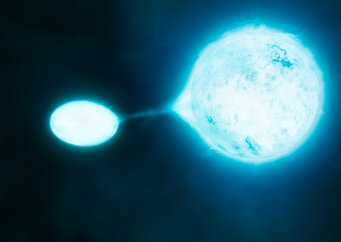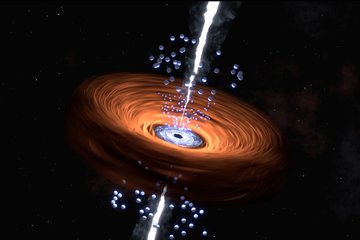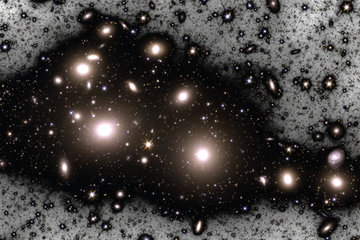Carbon from a cosmic source
Computer simulations show that binary stars produce a large amount of this vital element
Many things work better in pairs. The production of chemical elements is no exception. Many elements are formed inside stars during fusion processes. Carbon plays an important role in this because it is the basis of life and thus ultimately of human beings. But how effective is the cosmic source of this important building block? A study led by the Max Planck Institute for Astrophysics shows that massive stars produce twice as much carbon when they have a companion star.

Partners in space: massive stars often occur in close binary systems in which one star takes mass from its companion. New research has now shown that these systems produce about twice as much carbon as individual, massive stars.
The researchers know that massive stars are essential in the synthesis of all heavy elements – from carbon and oxygen to iron. Although most of these stellar heavyweights are born in multiple star systems, previous models have looked almost exclusively at single stars. An international team led by Robert Farmer from the Max Planck Institute for Astrophysics in Garching has now calculated the carbon footprint of massive stars that are partners in a binary system.
“Compared with a single star, a massive sun in such a system produces twice as much carbon on average”, says Farmer. Until recently, no one would have thought that massive stars are often part of a binary system. “We have studied for the first time how the presence of a companion changes the amount of elements they produce”, he says.
Most stars, including our Sun, are powered by the nuclear fusion of hydrogen into helium. Only when they have completed about 90% of their life do they begin to convert helium into carbon and oxygen. While lightweights like the Sun do not get beyond this stage, massive stars continue to burn carbon into heavier elements up to iron.
However, the major challenge is not producing carbon but rather getting it out of the star before it is destroyed. This is quite difficult with single stars. But stars in binary systems can interact with each other and transfer mass from their envelope to a companion. In this way, the star, which is losing parts of its mass, develops a carbon-rich layer near its surface. If a supernova finally occurs, the carbon is ejected into space in the violent explosion.

Stellar fusion reactor: In massive stars, hydrogen burns to form helium. This produces carbon, which can then be further processed into oxygen and even heavier elements.
“It may not be fair to blame binary stars for the greenhouse gases that cause global warming”, says Selma de Mink, co-author of this study and Director of the new Department of Stellar Astrophysics at the Max Planck Institute. “But isn’t it cool to realize that the carbon your body is composed of was probably created in a binary star?"
In fact, according to the group’s latest computer simulations, binary systems with a massive star in particular seem to produce most of the cosmic carbon. Other types of stars such as the large red giants or cosmic events such as the explosion of burnt-out suns (i.e. white dwarfs) are apparently less effective.
“Our results represent a small but important step towards a better understanding of the role of massive stars in creating the elements that we ourselves are made of”, says Farmer. So far, only one type of interaction has been studied in binary star systems. But there are many other possible life paths for a star born near a companion. We have only begun to systematically study the effects that a close companion has on the chemical yield of a massive star.
HAE / HOR













